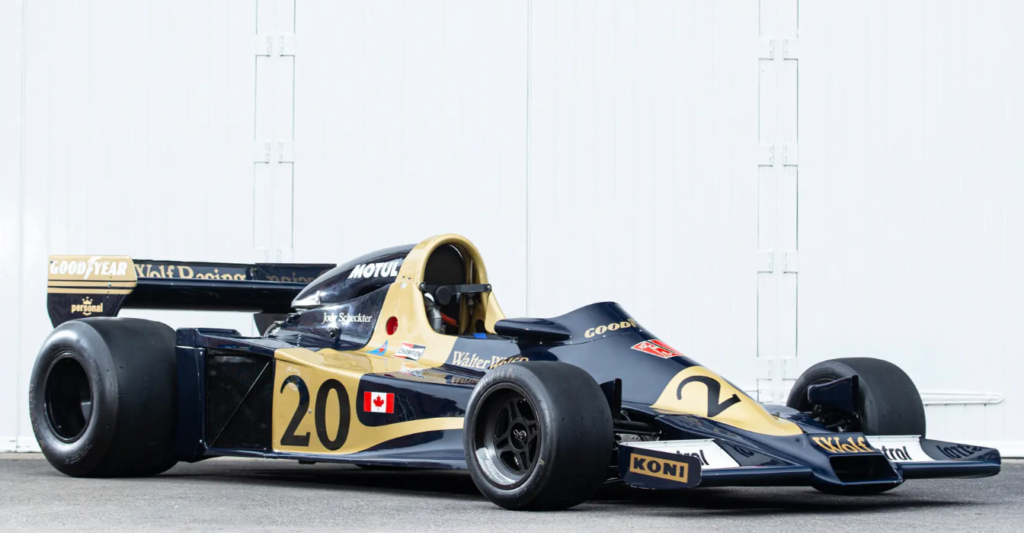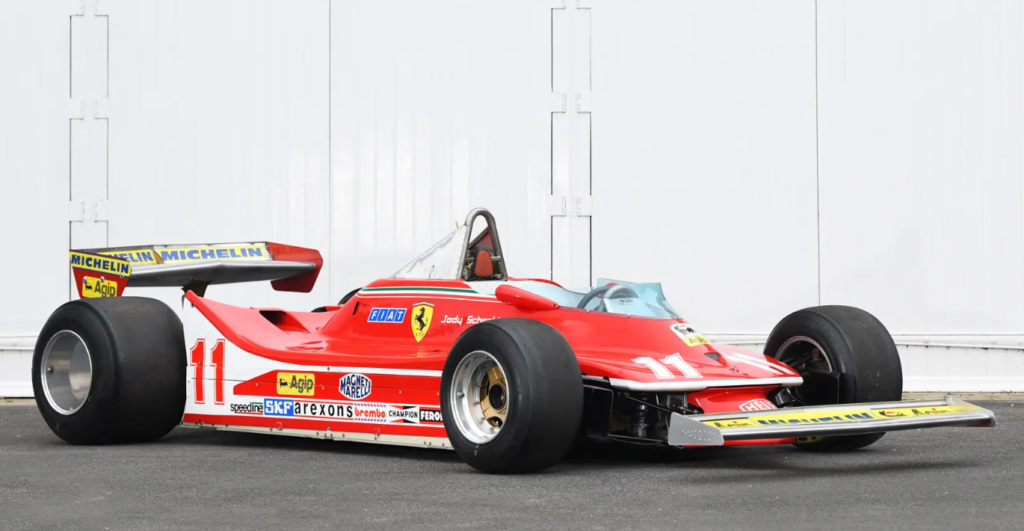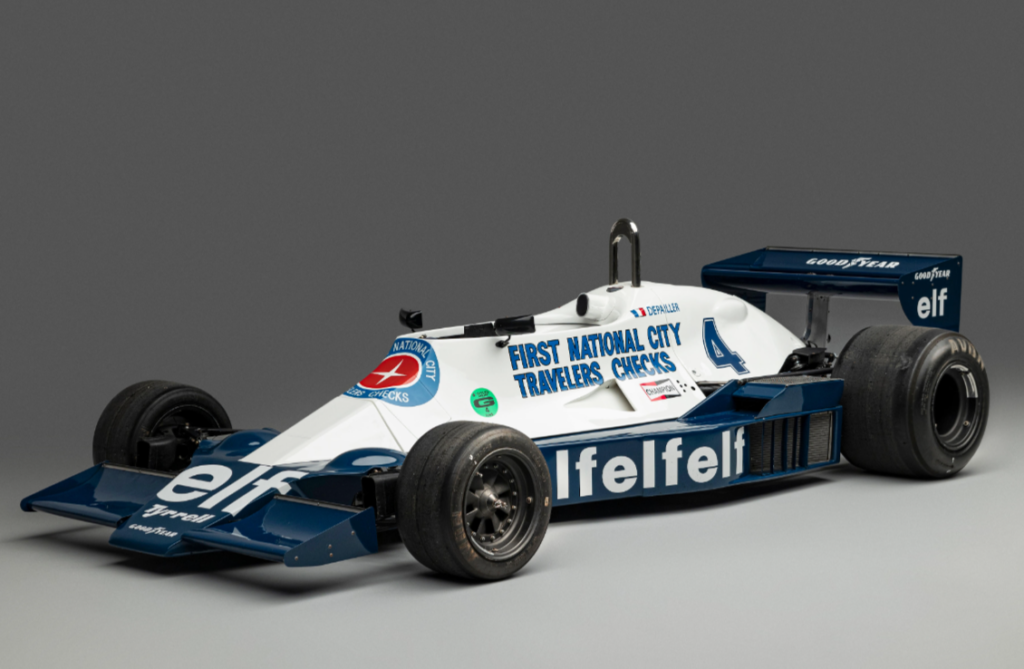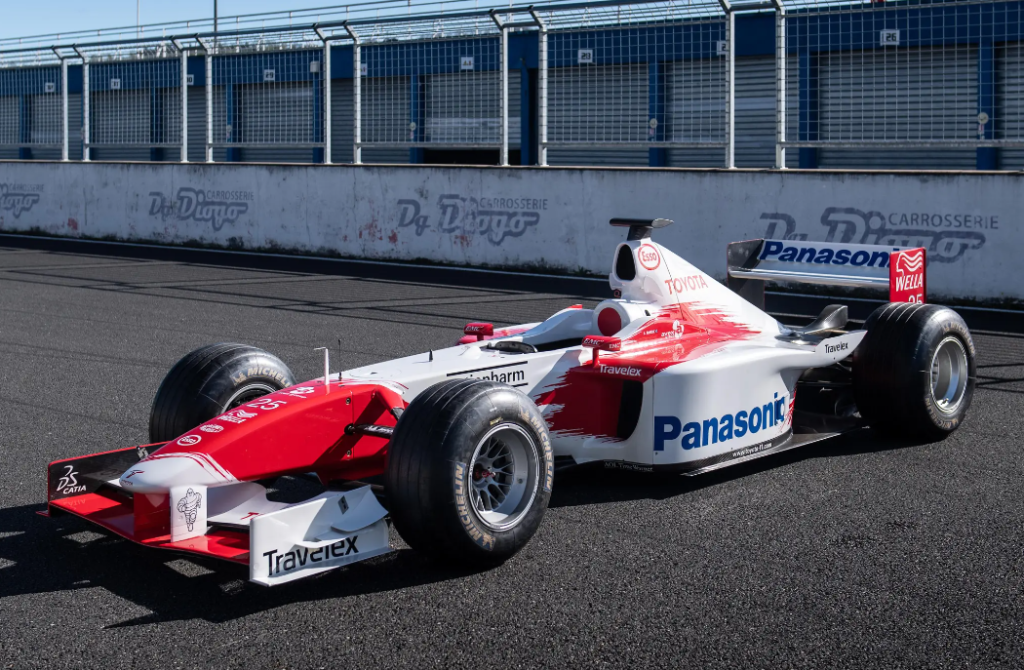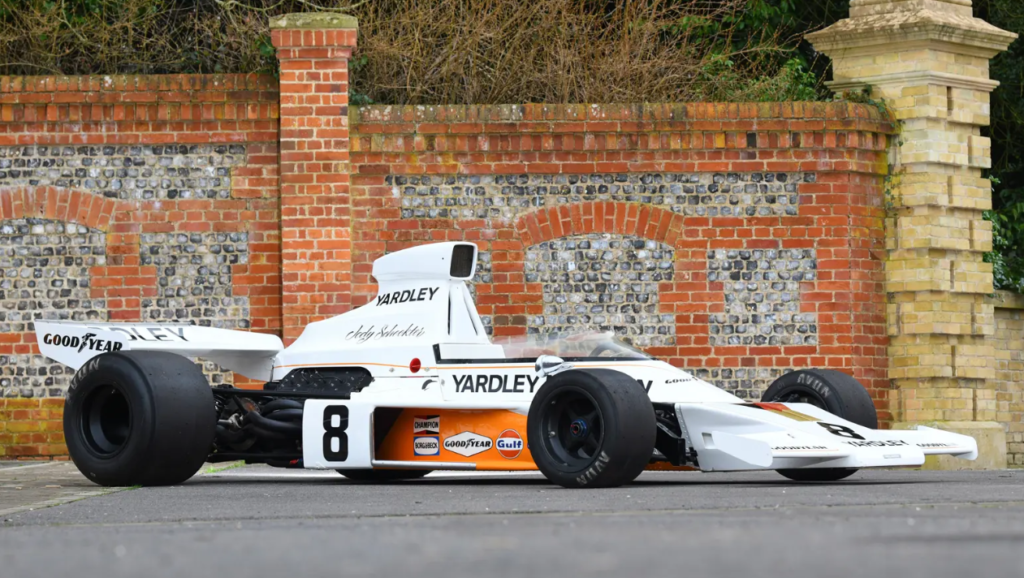2008 Force India VJM01
Offered by Bonhams | Goodwood, U.K. | July 2024

The Midland F1 team was what Jordan Grand Prix became for the 2006 season. At the end of ’06, they sold out to Spyker, who produced one car for F1: the Spyker F8-VII. During the 2007 season, Spyker was bought by Vijay Mallya, who was going to rename it Force India for 2008.
The first Force India race car chassis were actually slightly updated Spykers from the year before. They built a couple of chassis on their own too, which is what this is, apparently (chassis VJM01-05). It would’ve been powered by a 2.4-liter Ferrari V8 making 750 horsepower. Now it’s just a rolling show car with a Dexter Brown “art car” livery that was created for a 2011 charity auction.
The actual competition history for this chassis consists of:
- 2008 Australian Grand Prix – 21st, DNF (with Giancarlo Fisichella)
- 2008 Malaysian Grand Prix – 12th (with Fisichella)
- 2008 Bahrain Grand Prix – 12th (with Fisichella)
- 2008 Spanish Grand Prix – 10th (with Fisichella)
- 2008 Turkish Grand Prix – 20th, DNF (with Fisichella)
- 2008 French Grand Prix – 18th (with Fisichella)
- 2008 British Grand Prix – 17th, DNF (with Fisichella)
- 2008 German Grand Prix – 16th (with Fisichella)
- 2008 Hungarian Grand Prix – 15th (with Fisichella)
- 2008 European Grand Prix – 14th (with Fisichella)
- 2008 Belgian Grand Prix – 17th (with Fisichella)
- 2008 Italian Grand Prix – 20th, DNF (with Fisichella)
- 2008 Singapore Grand Prix – 14th (with Fisichella)
- 2008 Japanese Grand Prix – 16th, DNF (with Fisichella)
- 2008 Chinese Grand Prix – 17th (with Fisichella)
- 2008 Brazilian Grand Prix – 18th (with Fisichella)
The estimate here is $100,000-$150,000. Click here for more info.




